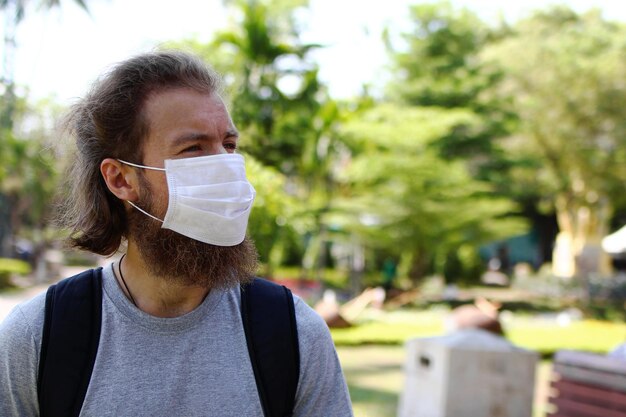Can Shingles Spread Through the Air? Everything You Need to Know
When it comes to health concerns, few questions arise with more urgency than those related to contagious diseases. Among these, shingles, scientifically known as herpes zoster, poses many questions due to its painful symptoms and misconceptions about its transmission. Today, we unravel the mystery: Is shingles airborne? Delve into the details for an understanding that empowers you with knowledge and dispels myths.
Understanding Shingles and Its Origins
Shingles emerges when the varicella-zoster virus (VZV), the same virus responsible for chickenpox, reactivates in your body. Initially, when you catch chickenpox, this virus remains dormant in nerve tissues near your spinal cord and brain. For reasons not entirely understood, it can awaken years later, causing shingles.
How Does Shingles Manifest?
The primary hallmark of shingles is a painful rash, usually forming a single stripe of blisters on one side of the body, often the torso. These blisters can pop, crust over, and heal within a few weeks. In addition to the rash, individuals might experience:
- Pain or tingling: This is usually the first sign before any visible rash appears.
- Fever: Indicative of the body's reactive response.
- Headache or fatigue: Unwelcomed companions during this affliction.
- Sensitivity to touch or light: Luminescent challenges are not uncommon.
Is Shingles Airborne?
The simple answer: No, shingles is not airborne. Unlike chickenpox, which can spread through the air (via respiratory droplets), shingles spreads differently.
Transmissions Demystified
Direct contact:Shingles is contagious only through direct contact with the fluid from the rash blisters. Touching, scratching, or accidentally breaking these blisters can lead to transmission.
Chickenpox warning: Someone without immunity to the chickenpox virus can contract chickenpox—and not shingles—if they come into contact with the open blisters of another’s shingles rash.
Protective Measures Against Shingles
Knowing shingles isn't airborne reorients our focus to preventive measures grounded in practicality and awareness. Here’s how to navigate safety:
For Those with Shingles:
- Cover the rash: Keep blisters covered with a clean, dry bandage to minimize risk.
- Good hygiene: Frequent and thorough handwashing can prevent viral spread.
- Avoid vulnerable individuals: Especially pregnant women, infants, and those with weakened immune systems, like those undergoing chemotherapy.
For Those Around Infected Individuals:
- Do not touch: If you're not immune to chickenpox, refrain from touching the rash or bandages of someone with shingles.
- Pre-vaccination: Consider the varicella (chickenpox) vaccine or the shingles vaccine if you qualify, for increased protection.
Risk Factors and Who Is Most Affected
While anyone harboring the varicella-zoster virus can technically develop shingles, certain factors elevate risk levels:
- Age is a factor: Individuals aged 50 and older face a heightened risk.
- Weakened immune systems: Diseases or treatments like cancer therapies can compromise immunity.
- Experiencing stress or trauma: Physical or emotional stressors have been known to trigger shingles.
Why Non-Airborne Matters
The revelation that shingles is not airborne is more than a detail; it's a reassurance. Unlike airborne illnesses, containment and prevention of shingles focus on contact precautions rather than respiratory barriers.
Vaccination: A Shield Against Shingles
Vaccinating against shingles offers a reliable layer of defense. Recommended primarily for older adults, the shingles vaccine (available in the form of Shingrix or Zostavax) can significantly reduce the risk of developing shingles and related complications.
Why Vaccination Matters
- Prevention against complications: Postherpetic neuralgia (PHN), a severe aftermath of shingles, presents with debilitating nerve pain. Vaccination can dramatically lower PHN incidence.
- Long-term efficacy: Modern vaccines promise coverage that extends through many years.
- Eligibility and timing: Consult healthcare providers to gauge when vaccination might fit best into your health regimen.
Managing Shingles at Home
For those afflicted with shingles, managing symptoms at home can foster comfort and speed healing:
Tips for Relief:
- Cool bath soaks: Help relieve itching and discomfort.
- Pain alleviators: Over-the-counter pain relievers may offer respite.
- Calamine lotion: Applying it might soothe the skin and curtail itching.
- Loose clothing: Opt for soft, breathable fabrics to ease rash discomfort.
Remember, these methods help manage symptoms but aren't substitutes for seeking professional medical guidance, especially if pain or rash persists.
Common Misconceptions and Facts About Shingles
Misunderstandings about shingles extend beyond its transmission method. Here are some realities clarified:
Myths vs. Facts
Myth: Only those who haven't had chickenpox can get shingles.
- Fact: Shingles occurs only in individuals who have previously encountered VZV.
Myth: Having shingles once means you're immune forever.
- Fact: It's possible, though rare, to have shingles more than once.
Myth: Shingles and its rash are immediate post-chickenpox occurrences.
- Fact: Shingles often occurs years, or even decades, later.
Navigating Life with Shingles
Whether you're combating shingles yourself, or caring for someone who is, understanding and empathy pave the way. Awareness of safe practices and recognizing the mental and physical toll can enhance everyone's comfort and reduce stress.
Support Networks
Community and emotional support, whether through family, friends, or support groups, can make a world of difference. Sharing stories and learning from others provides solace and practical insights.
- Reach out: Engaging with peers who’ve experienced shingles can offer immense emotional catharsis.
- Education matters: Informing loved ones prevents fear and encourages appropriate protective measures.
At the end of the day, understanding shingles in its entirety—beyond misunderstanding it as airborne—arms the public with clarity. With the right knowledge, protective strategies, and community support, we navigate the uncertainties of health with assurance.
🌟 Key Takeaways & Practical Tips 🌟
- Shingles is NOT airborne: It spreads through contact with the blisters.
- 🛡️ Vaccination: Protects and prevents complications; ideal for older adults.
- 🤝 Good hygiene: Washing hands and covering rash blisters mitigate spread.
- 🙅♂️ Avoid vulnerable contacts: Be cautious near pregnant women, infants, and immunocompromised individuals.
- 😊 Seek support: Leverage emotional and community support networks.
